Let's have some fun and replace all of those crumbling original vacuum lines and in the process eliminate the chance of a vacuum leak. Win/win, all around. All pics in this DIY are mine, unless otherwise noted.
The tools you'll need for this job are the following:
1/4" ratchet
10mm 1/4" socket
Assortment of pliers
Assortment of small wire cutters
Assortment of screwdrivers: flathead, phillips and T30 torx(to remove the drivers side headlamp assembly).
Small forceps(VERY important and helpful for this job. It allows you to lock the forceps onto the new silicone hose to use for leverage when installing onto a nipple in tight quarters).
Exacto hobby knife
Telescoping mirror
LED Headlamp or small bright flashlight
Dish soap(Fragrance of your choice).
~20 ft. of 3.5 mm silicone vacuum line(I bought mine from verociousmotorsports)
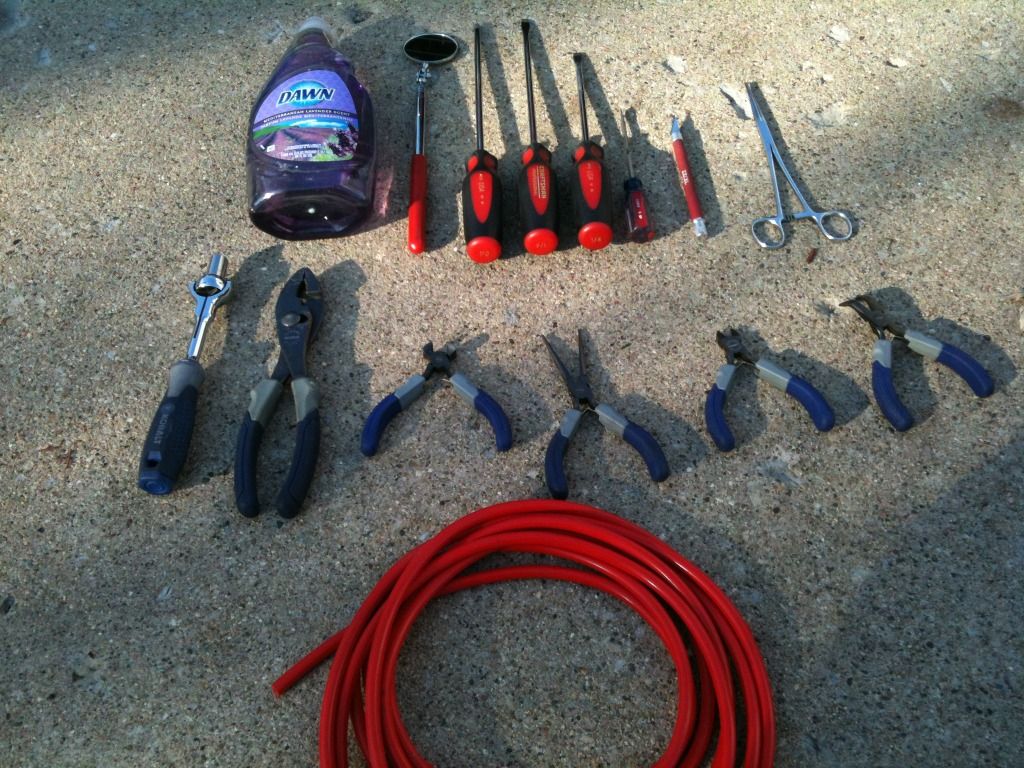
First, we start with a diagram of the 3.0 engine, showing most of the vacuum lines. This diagram omits the lines leading to the combi-valves, one on each side, so I drew them in myself.
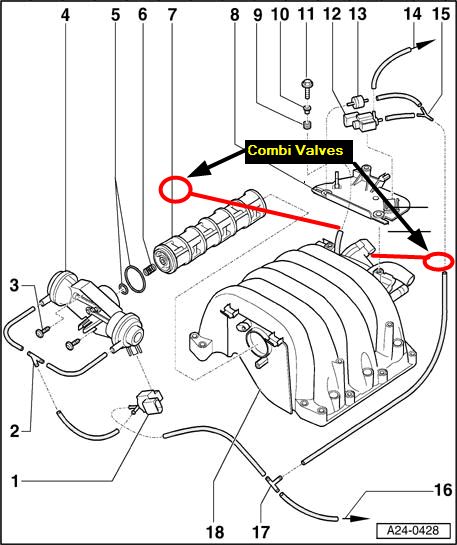
Here we have a shot of our sexy looking 3.0 engine, covered in plastic. Let's take all of these plastic covers off to expose the vacuum lines.
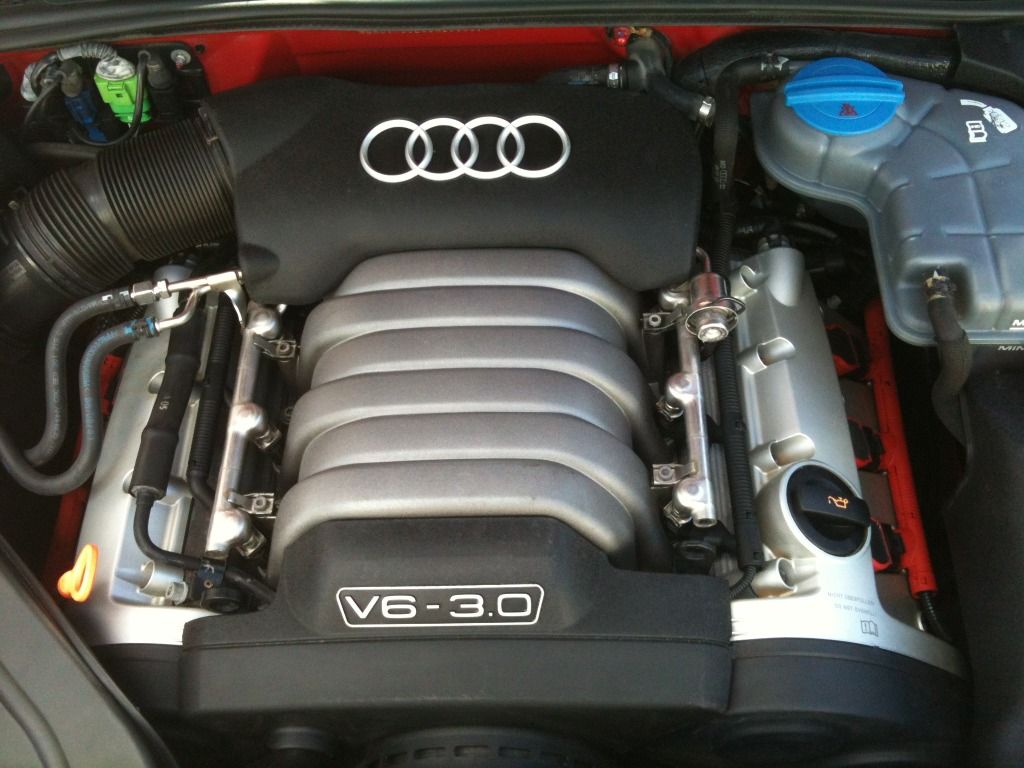
I cannot stress this enough: REPLACE ONE HOSE AT A TIME. DO NOT DISCONNECT MULTIPLE LINES AT THE SAME TIME. It's easy to get confused as to where this hose goes, or where that hose goes, so if you do it one hose at a time, you will be alright.
The technique I used for removing the old vacuum lines is simple, and prevented damage to the fragile plastic nipples which the new silicone hoses must be attached to:
1) Using the Exacto hobby knife, slice the old vacuum line length wise where it connects to the plastic nipple. You only need to make a slice about an inch long to ensure easy removal.
2) With the tip of the knife, peel off the old hose after it's been cut.
To install the new hose:
1)Hold the old hose up to the new silicone hose and cut a section of the new silicone hose to match. I actually made my new hoses about an extra 1/4" longer, to give me a little bit of flexibility when handling the hoses.
2) apply a very small amount of dish soap onto the end of the new silicone hose that is going to connect to the nipple. This will help the hose slide onto the tee connector nipple quite easily.
3) Slide the new hose onto the tee connector nipple as far as you can. When working in tight confines, like when you have to connect the combi-valve lines, use the locking feature of the forceps so that you can grab the new silicone hose and lock the forceps. This will give you leverage as you attempt to slide the hose onto the nipple. I found the forceps to be an invaluable tool when doing this job.
Alright, it's easier to see where all the vacuum lines go if I show you an "after" shot, since the red silicone hose is much easier to see than the old black braided lines. This pic shows every vacuum line you'll need to replace. The red-dotted lines represent hidden lines that are running underneath something.
I want to point out two special PITA lines, which will take up the majority of your time during this job. The first is the brittle hard plastic line on the driver's side front of the engine, that runs between a small gap in the intake manifold. If you're able to replace the two small braided hoses that connect to this without breaking the plastic line, then you're lucky. If your experience is like mine, however, this plastic line will snap while you're attempting to slide the new silicone hose on. In this case, you will need to thread a long piece of silicone hose through that small gap in the intake manifold. It is a major league PITA, but is doable with use of the telescoping mirror and flashlight, so that you can see the hose coming as you snake it down.
In order to give yourself more room with which to turn your arm into a pretzel and allow you to grab the silicone hose when it finally gets snaked all the way through the intake manifold, take your T30 torx screwdriver or bit and remove the driver's side headlamp assembly. That really helps create more room.
The other major pain in the arse is going to be the line that runs out to the passenger side combi-valve. We'll get to that in a moment, and look at it in more detail.
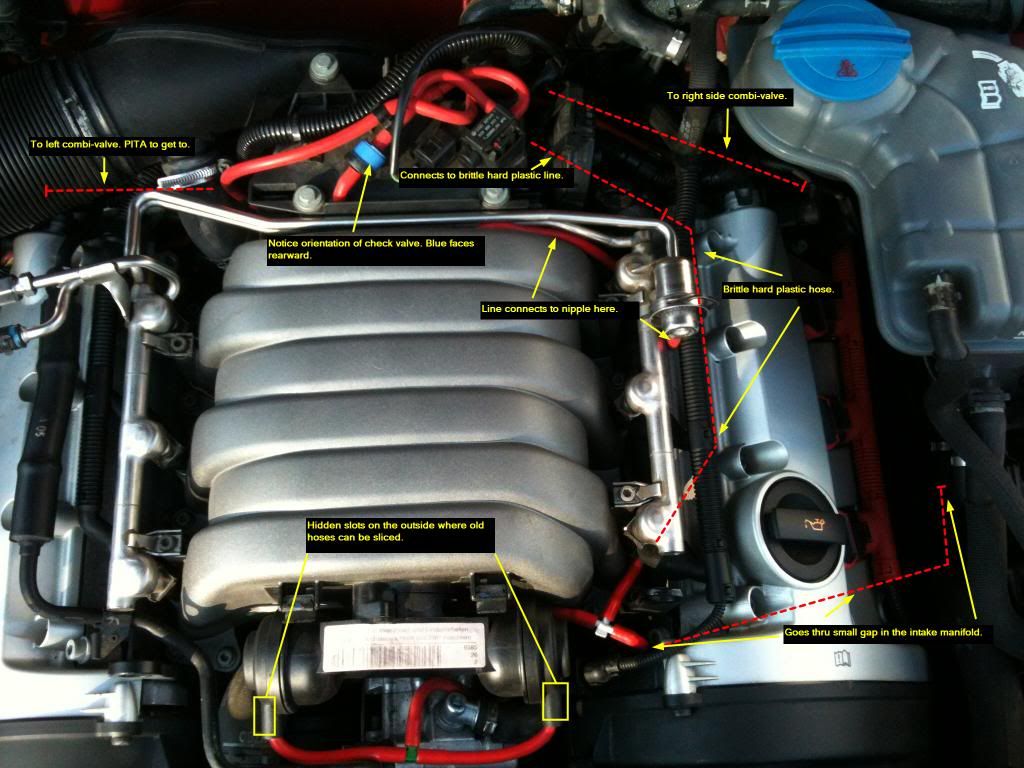
Here's a nice angle of the front vacuum lines, showing them after the replacement has been completed. There's nothing especially difficult about replacing these, just be sure to go slow and replace one line at a time.
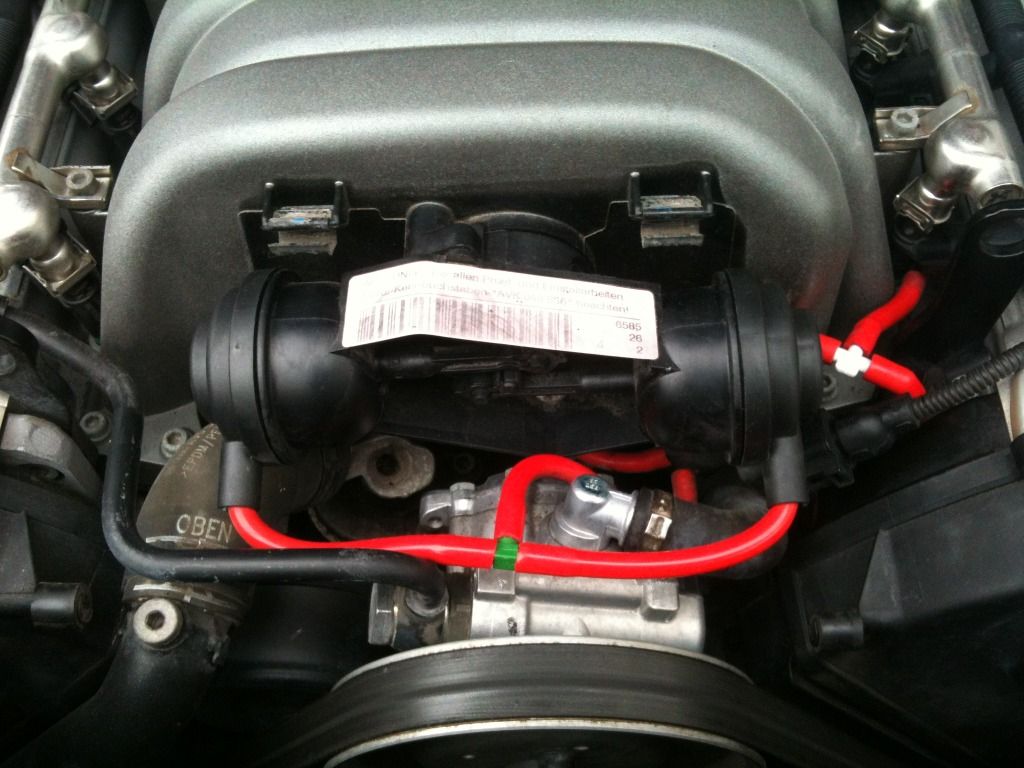
Moving to the back, this picture of my vacuum lines before replacement demonstrates why we don't remove all the hoses at once and then hope to remember where they all plug into. In this pic, you can also see the three 10mm bolts that need to be removed in order to be able to flip the plate up to allow for easy access. Go ahead and remove those now.

After you remove those bolts and lift up on the plate, you'll see this large tee that you just pulled out of it's hose by lifting up on the plate. If it didn't come out, you'll have to pull on it a bit. At any rate, take special note of this tee, and make sure that when you put the plate back on, that this tee gets plugged back into its hose. I didn't replace the hose that this tee connects to, since it was much larger than my 3.5mm hose.
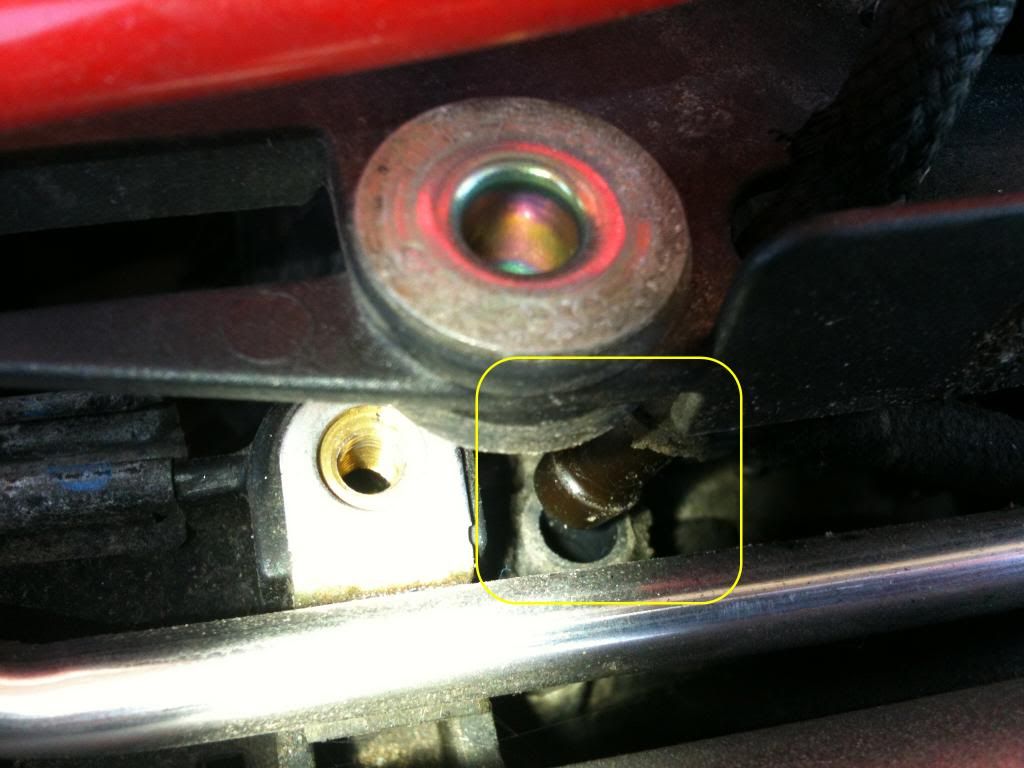
And here's a better pic of the tee. Notice the orientation of that blue and black check valve. Make sure that the blue side faces away from you and is pointing towards the firewall.
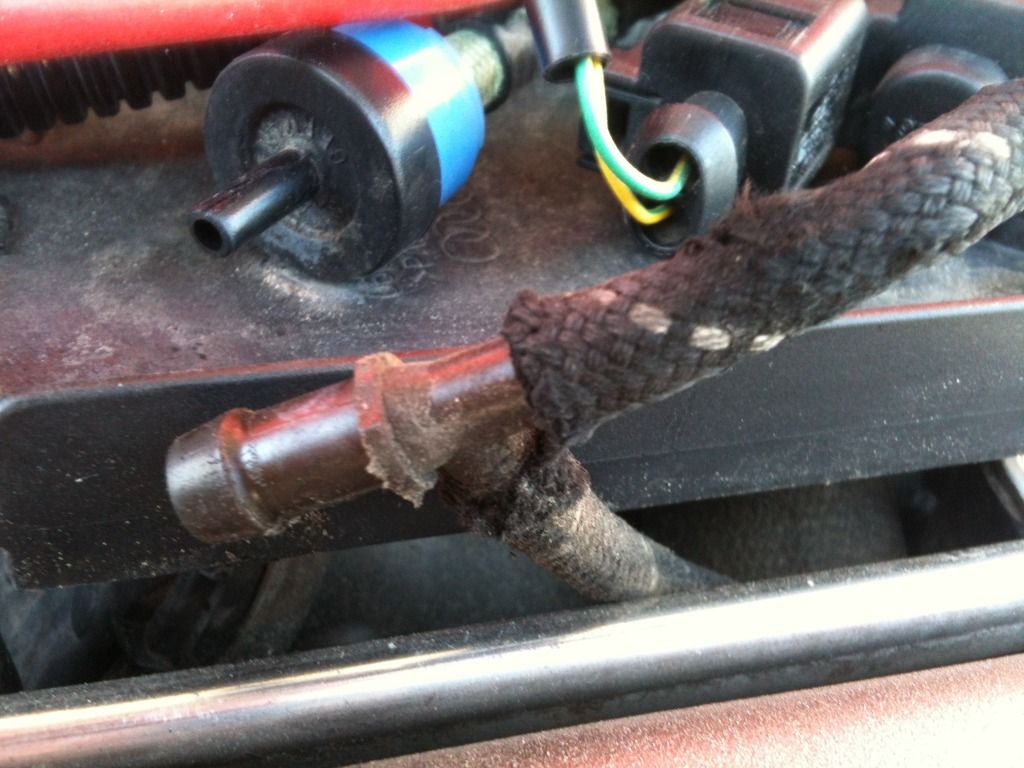
This is my special "hold the plate up with a small screwdriver" trick. I snapped this pic while in the process of changing out the lines that run under the plate. Notice how tight that hose fits between the manifold cover and the fuel rail. It's tight, and you'll need to wedge it in there.
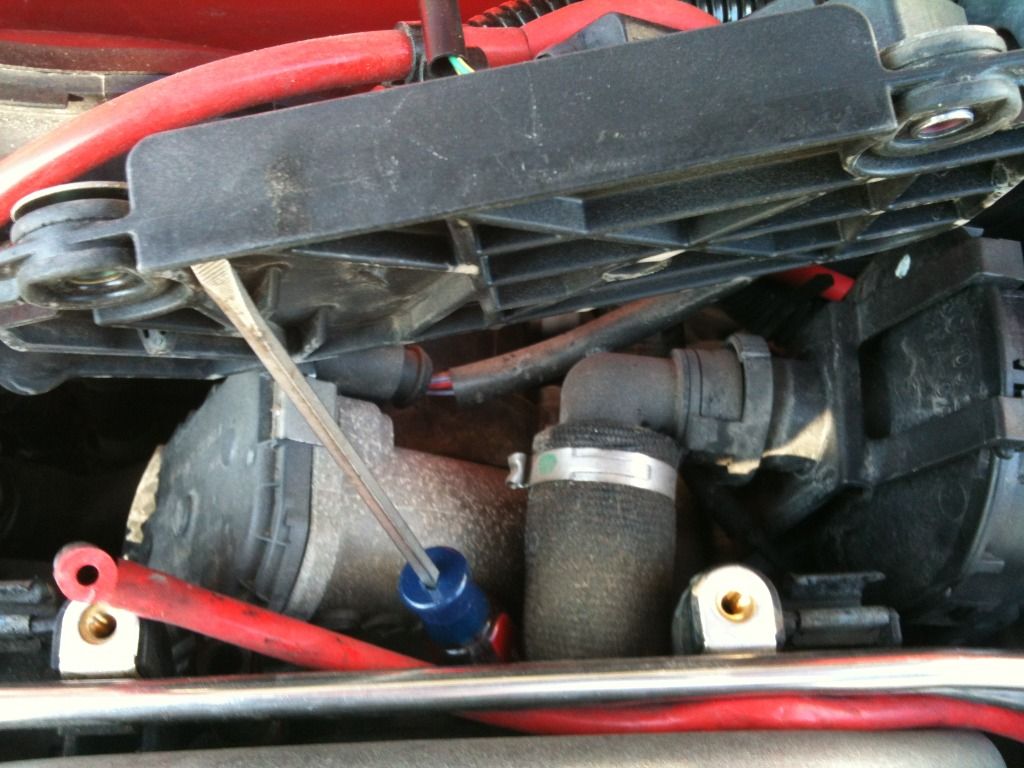
Let's move on to the driver's side combi-valve hose. It will be difficult to see, but using your flashlight and mirror, you'll be able to find it. The combi-valves have a rubber hose that attaches to them and runs about 4 inches to a plastic connector. On the other side of this connector is the braided vacuum line. There's no need to replace the rubber hose leading to the combi-valve. Just remove the braided vacuum line. Once you've removed the braided line, you'll see what the rubber hose and the nipple that it's connected to look like:
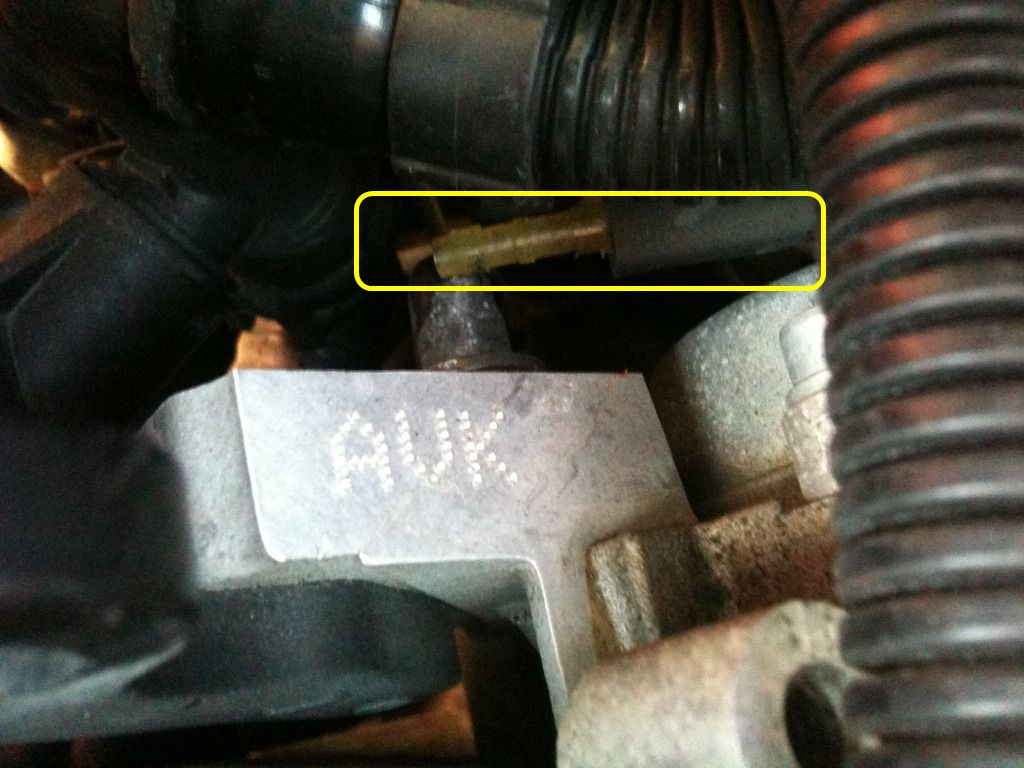
You could try to connect the new silicone hose to the nipple from here, but there's not much room to work with. It's easier if you push the rubber hose from the combi-valve back toward the right, and bring it up so that the nipple it pointing towards you, as shown below. It's very easy to install the silicone hose from this angle.

Here's the after shot of the silicone lines in the back. Very nice!
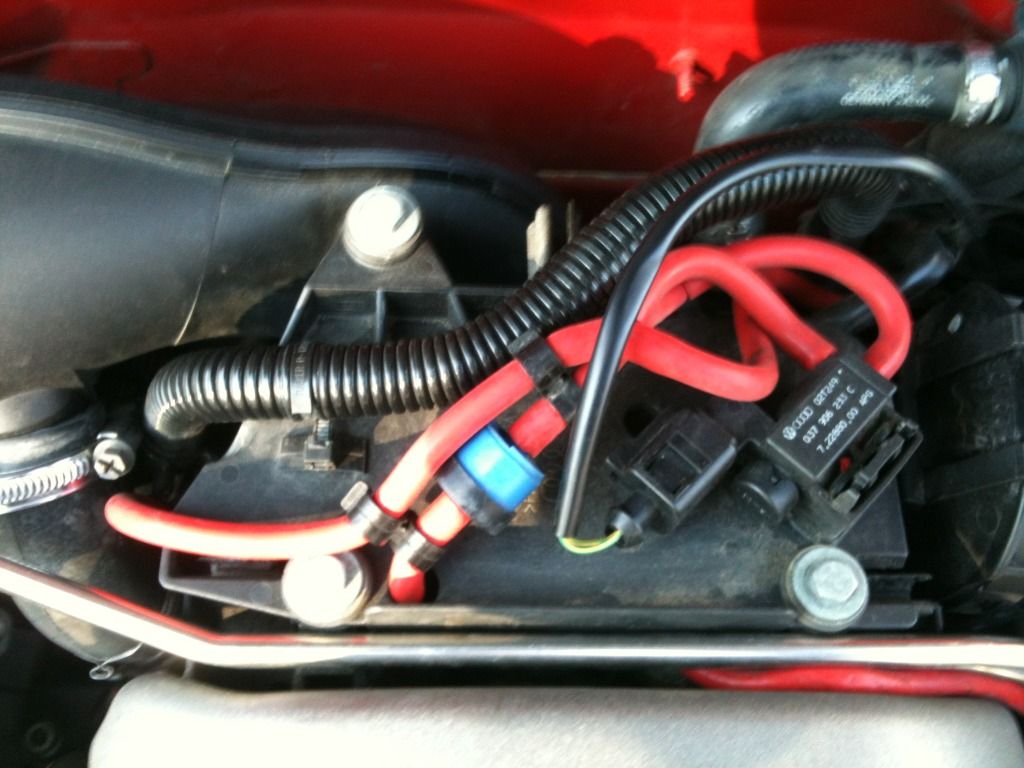
Oh boy, now the real fun begins. I saved the vacuum line leading to the passenger side combi-valve for last, because it's the most technically difficult. We need to remove the MAF assembly so that we have as much room as possible in which to operate. So, pinch together the two clamps surrounded in yellow and move them onto the flexible hose, so that you can pry off the hose with a flat head screw driver. Next, remove the two clips that hold the MAF assembly together. One of them is surrounded in cyan in the pic below. The other one is behind the MAF, but is accessible with a screwdriver.

Next, carefully insert the flat blade of your screwdriver into the MAF sensor clip, and twist it to "unlock it". It should give a little "click" when it unlocks. You may then pull up on the sensor until it's free. When this is accomplished, remove the whole MAF assembly to a safe place.

Next, snip the zip tie where that arrow is pointing. This allows you to move those cables away from the crankcase breather tube. Speaking of that tube, pry up on each claw that is holding it onto the intake manifold. There are 4 of them. Carefully pry them up and off the lip until you can pull the tube away from the manifold.

Finally, in this pic we see the results of our labor so far. I've pulled the crankcase breather tube from the manifold, and then zip tied it to another hose to keep it moved out of the way. Lo and behold, here is the left side combi-valve rubber hose and nipple. Repeating the procedure on this side may be much more difficult than the driver's side. If you can, try to move it back to the left and get the nipple to face up like you did on the driver's side. If that doesn't work, then it's time to make good use of the forceps and grab that silicone hose and lock it into place. Holding the combi-valve rubber hose with a long needle-nosed pliers, you can slide the silicone hose onto the nipple. For me this was a bastard of a job, but I finally managed it.
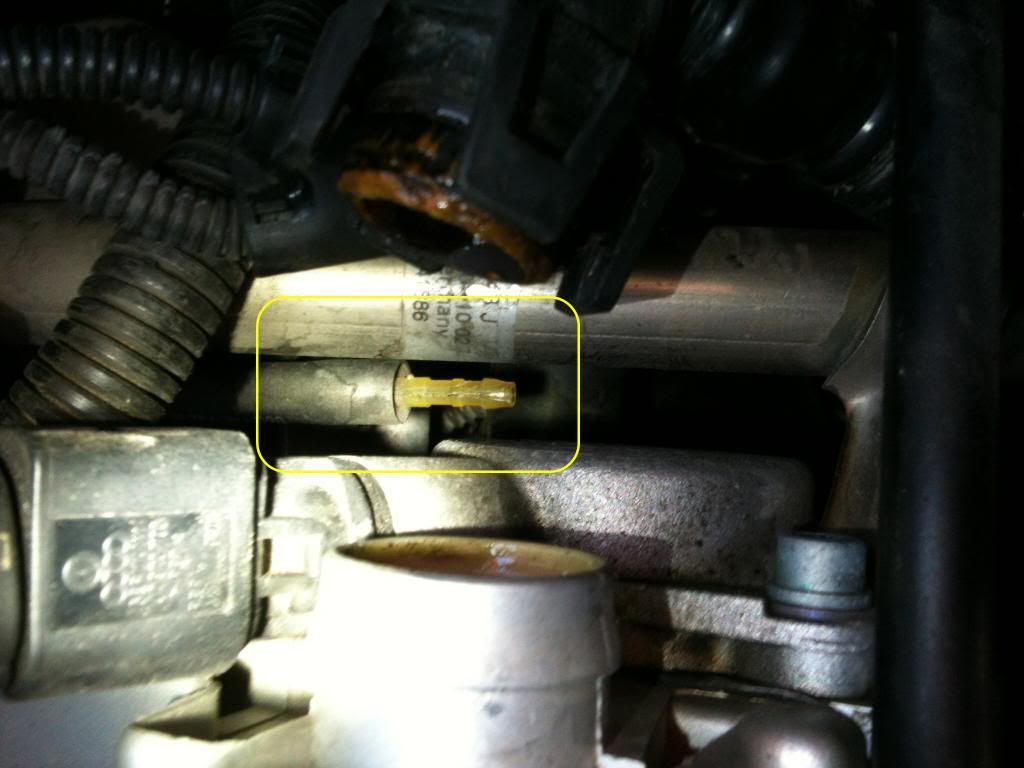
Success! Look at how little room there is down there.
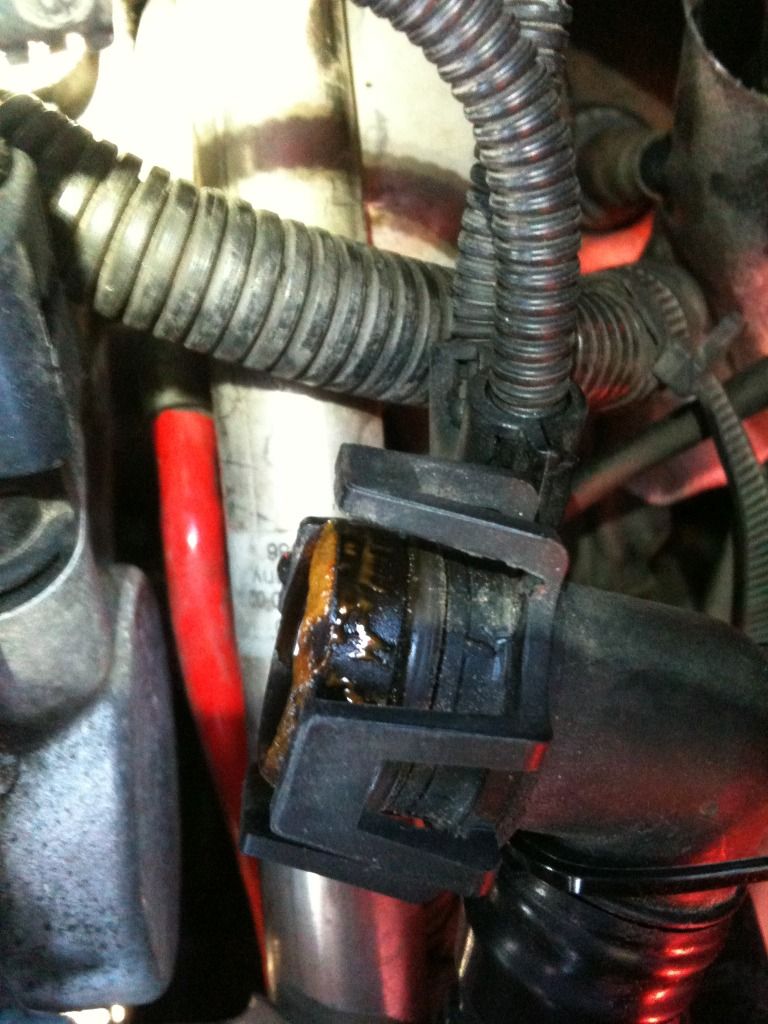
Clean up the tip of your crankcase breather tube if it looks like mine did, then reassemble everything, making sure to not have any spare pieces laying around.
You're all done, congrats! You just saved yourself many headaches down the road, and multiple hundreds of dollars in labor that you didn't have to pay to the dealership.














 His: 2012 Moonlight Blue Metallic S5 Prestige
His: 2012 Moonlight Blue Metallic S5 Prestige Hers: 2014 Lava Gray Metallic Q5 2.0T
Hers: 2014 Lava Gray Metallic Q5 2.0T Son's: 2005.5 Imola Yellow B7 S4 4.2 Sedan
Son's: 2005.5 Imola Yellow B7 S4 4.2 Sedan 
 Reply With Quote
Reply With Quote




 Ah, the life of owning an Audi.
Ah, the life of owning an Audi.

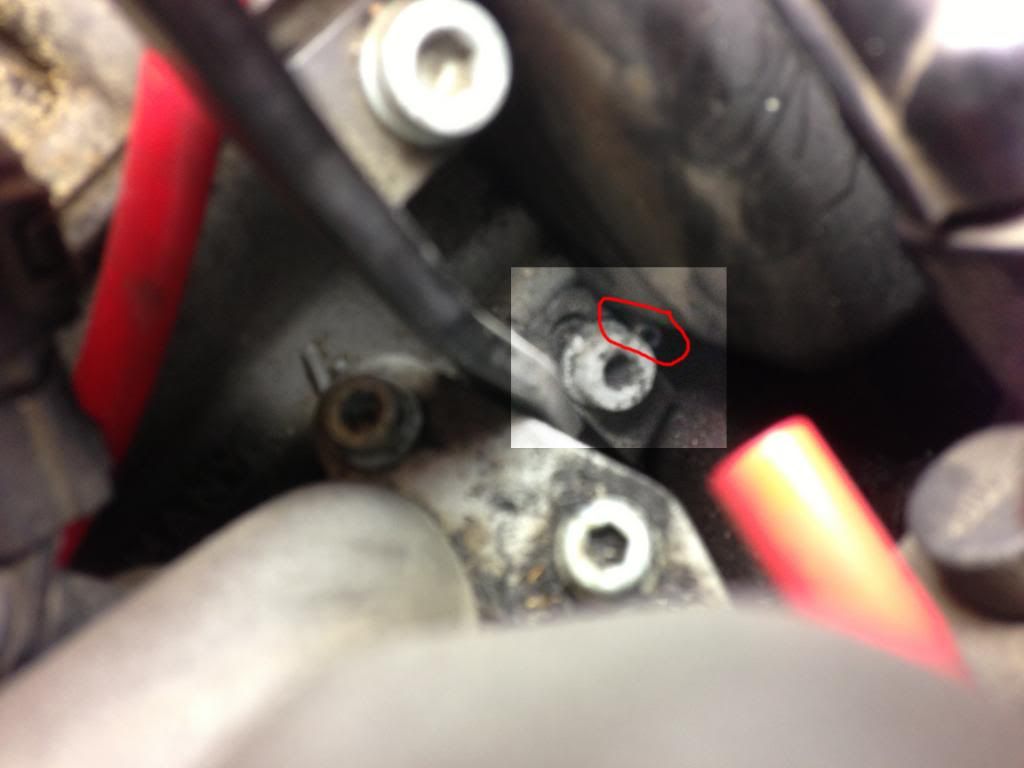

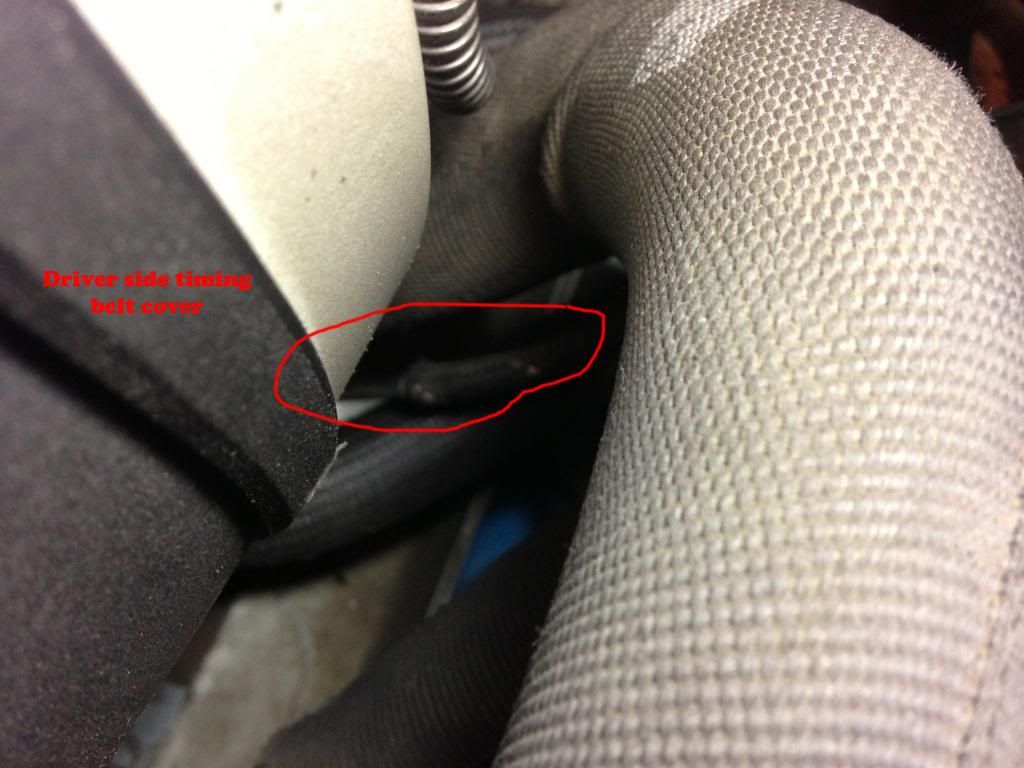
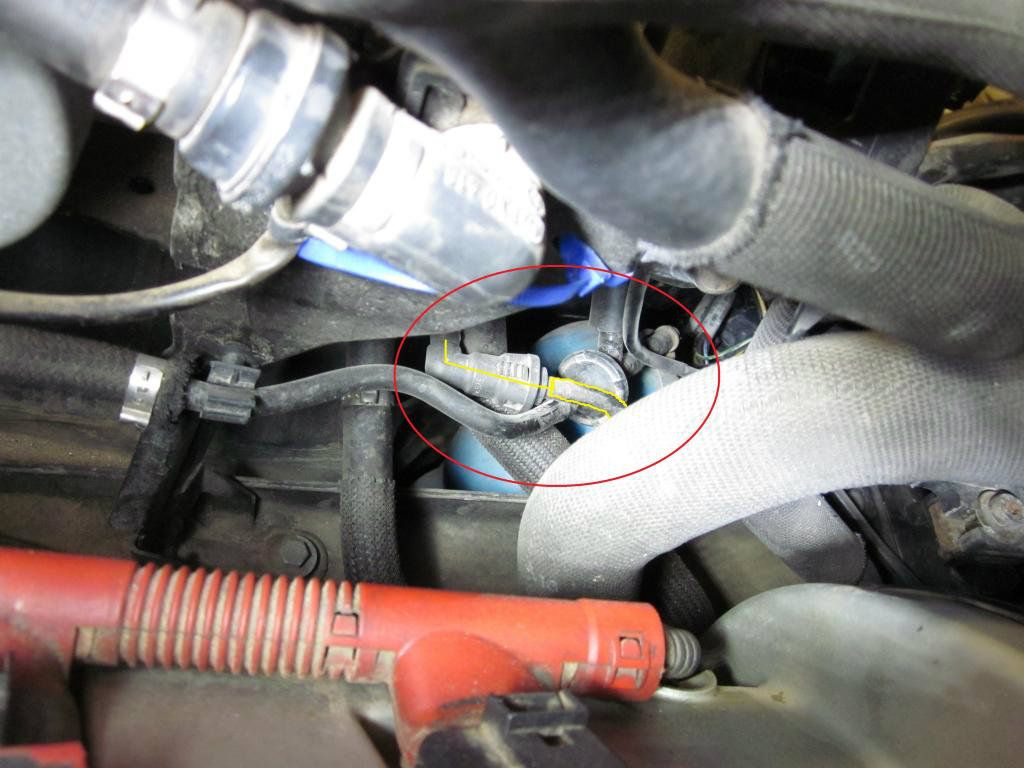
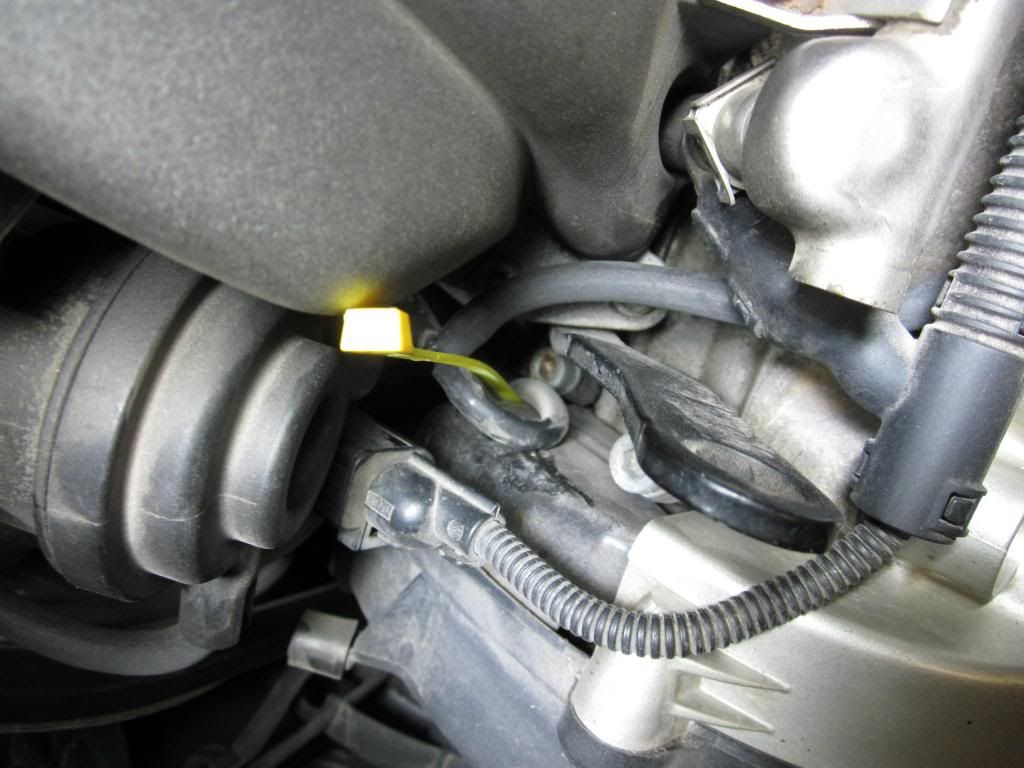




Bookmarks